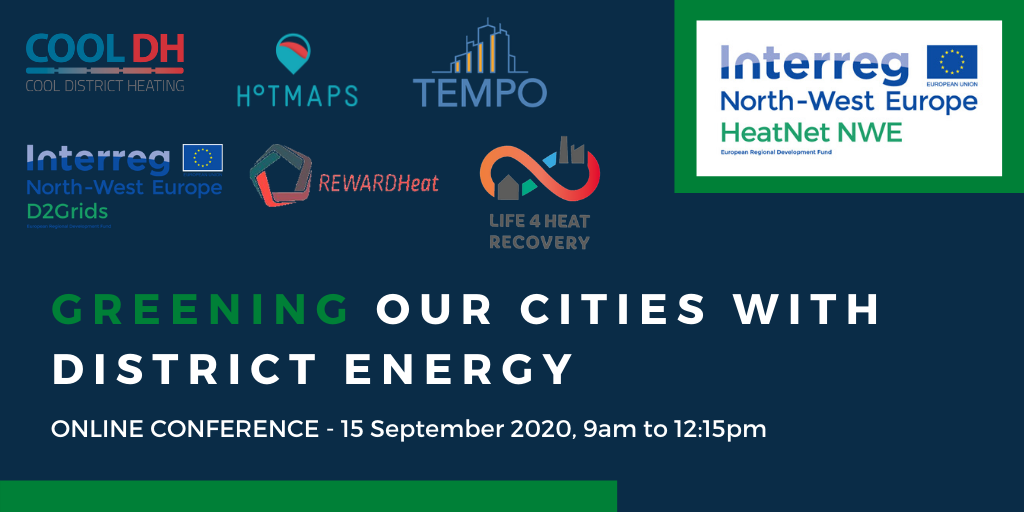On 15th September, the HeatNet NWE project organised its final conference “Greening our cities with district energy”, in partnership with 6 other EU-funded projects D2Grids, LIFE4HeatRecovery, Hotmaps, REWARD Heat, COOL DH and Tempo. Almost 100 people attended the event, to discuss the development of the 4th generation of district heating and cooling (4DHC), learn about the barriers and solutions for the roll-out of this technology and discover the HeatNet NWE pilots.
Rebecca Grossberg, Project Officer for the Joint Secretariat of the Interreg North-West Europe (NWE) Programme, kickstarted the conference and pointed out that thanks to the project, 15,000 tCO2e are saved per year, 3,000 additional dwellings are supplied by DHC and 8M€ in extra funding have been leveraged.
Donna Gartland, CEO of Codema (Dublin Energy Agency), highlighted the importance of developing green district energy to achieve the decarbonisation of the heating and cooling sector in NWE. She underlined that the most advanced countries in EU in this field are the ones with a well-developed DHC sector.
Access the introductory presentation here
In the first plenary session, 3 speakers from different EU-projects brought in the city, energy company and university-perspective on barriers and solutions for the roll-out of green DHC in cities. The importance of this technology was also recognised by the European Commission in the last EU smart sector integration strategy, released in July . Dominiek Vandewiele, from the intermunicipal partnership Intercommunale Leiedal, stressed the need of flagship projects to raise awareness even at local level, and to better train consultancies and services providers on innovative technologies. He presented the planning process performed during HeatNet NWE with 13 municipalities in South-West Flanders, based on mapping of demand and potential sources.
Herman Eijdems, from the company Mijnwater, reminded the importance of standardization of products, components and processes, and the need of scaling-up of DHC solutions to attract investors and finance low temperature district energy systems. It is very much needed to develop demand-driven systems which are resilient and tap local resources. According to Roberto Fedrizzi, from the research centre Eurac, new business models are needed: energy should be produced the closest to its consumption place and considered rather as a ‘service’ than a ‘commodity’. Consumers are not always able or willing to spend more for renewable energy and tend to relay on fossil energies when cheaper. Selling auxiliary services (eg. internet or other) along with heating could be the future.
Participants were able to discover the 6 living labs and the online guide to district heating developed in the framework of HeatNet NWE. In this knowledge hub, you can download all the resources developed by the project, including a number of guides to replicate the living labs.
You can download the living labs' presentations here:
- Developing 5th generation grid in Plymouth (UK)
- Multi-energy grid in Boulogne-Sur-Mer (FR)
- District heating roll-out in South-West Flanders (BE)
- Advanced 5th generation grid in Heerlen (NL)
- Waste heat recovery from data centre in Dublin (IE)
- Using low-temperature DHC to fight energy poverty (UK)
In the last part of the conference, participants were able to go into more depth in specific aspects of 4th generation DHC development. You can download the presentations on the different topics at the links below:
- Transition roadmaps for cities: how to scale up DHC pilots?
- Heat mapping and spatial policy for DHC development
- 4th and 5th generation DHC: what does it change in terms of operations and technologies?
- DHC business models and pricing
Any question? Don’t hesitate to contact the speakers, the contact details are included in the presentations.

